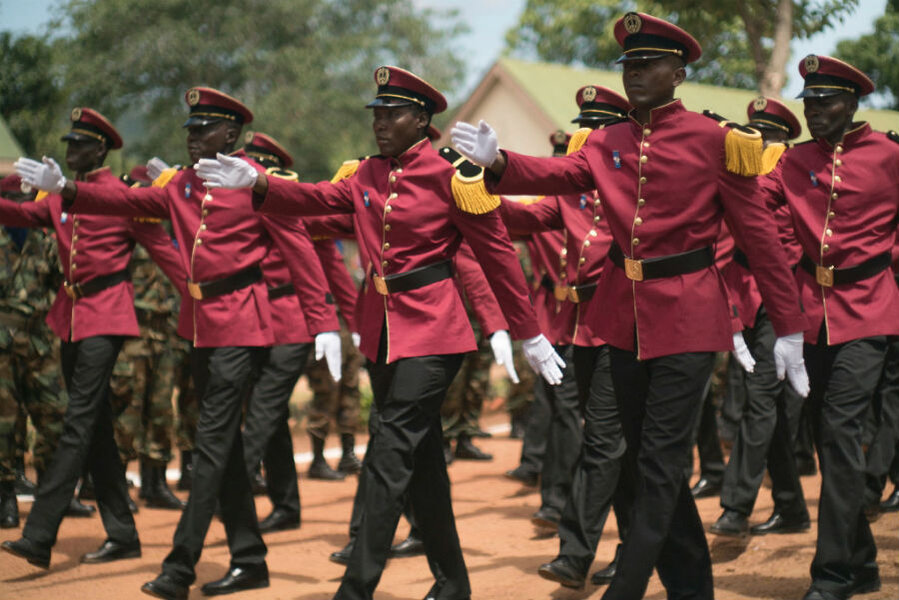Violence heats up in Central African Republic
Loading...
| Zemio, Central African Republic
No soldiers or police patrol this remote town in the far southeast of Central African Republic, where armed groups have attacked several times in the past few months. A company of United Nations peacekeepers here ventures no more than three miles from their base.
Local authorities’ requests for more help to secure the area have gone unanswered as Central African Republic’s deadly sectarian violence moves closer to the region along raw dirt roads. The town of 10,000 people feels increasingly unsafe, community leader Pierre Yakanza said.
The violence has killed hundreds in the past month and is spreading through parts of the country far from the capital, Bangui. The UN peacekeeping force of 12,000 troops is not enough to protect civilians.
“With just the UN, it’s not enough. It can’t secure the people 100 percent,” Mr. Yakanza said. “We don’t know what’s coming.” Some people have fled to Congo, a few kilometers’ walk away.
The UN peacekeeping force commander in Central African Republic, Lt. Gen. Balla Keita, told The Associated Press he is constantly moving forces around the impoverished country to stop the resurgent violence.
“The whole country is in turmoil again,” said Mr. Keita, who commands the multinational force, known as MINUSCA, and wants additional troops to protect civilians. “If we want to be successful, really we need some additional capacity.”
Central African Republic has been unstable since its longtime president was ousted by northern rebels in March 2013. By the end of that year, sectarian violence had exploded and eventually forced most of the capital’s Muslims to flee to neighboring countries.
The southeast was mainly spared bloodshed, but all that has changed this year.
Since May 8, fighting in the southeastern city of Bangassou, the southern town of Alindao and the central mining town of Bria has left more than 150 people dead and displaced more than 25,000, according to the UN.
The UN troops are “stretched too thin to respond to all of the hotspots right now, including in the southeast,” said Evan Cinq-Mars, the UN advocate and policy adviser at the non-profit Center for Civilians in Conflict.
“There needs to be a serious discussion about how to reinforce the UN mission given the precarious dynamics gripping CAR right now.”
While there are hopes that the Central African Republic army, or FACA, can secure the area, that’s unlikely anytime soon. It’s estimated to have about 7,500 troops and is poorly armed and trained.
In Bangui, European Union soldiers are training thousands of new Central African Republic Army troops that could be deployed to the countryside.
“We are trying to make an army and an army takes years in order to form,” said Brig. Gen. Herman Ruys, commander for the EU training mission.
The recent increase in violence comes as the US military ends its hunt for Lord’s Resistance Army leader Joseph Kony. The Ugandan-based rebel group has been active in Central African Republic, and many fear civilians are now even more vulnerable.
The UN has anticipated this security vacuum since June 2016 and knew it would be unable to fill the void, according to an internal memo obtained by the AP. In the memo, UN officials said the withdrawal by the US and Ugandan militaries would potentially lead to increases in civilian attacks and “fresh abduction campaigns” by the rebel group.
“The withdrawal of Ugandan and US troops in the region has placed an even greater burden on MINUSCA to protect civilians from attacks, a task they have struggled greatly to live up to so far,” said Paul Ronan with the non-profit Invisible Children.
Last week, a group of Lord’s Resistance Army fighters attacked the village of Banangui, about 35 miles from Zemio. Wearing military uniforms and armed with AK-47s, they wounded two civilians and kidnapped 16 people, according to a nonprofit group monitoring the security situation.
“The problem is that the LRA are always on the roads,” said Moïse Ouele, 33, who lives in a village near Zemio. “They stop the people on the road and take all their things. They also kill them.”







